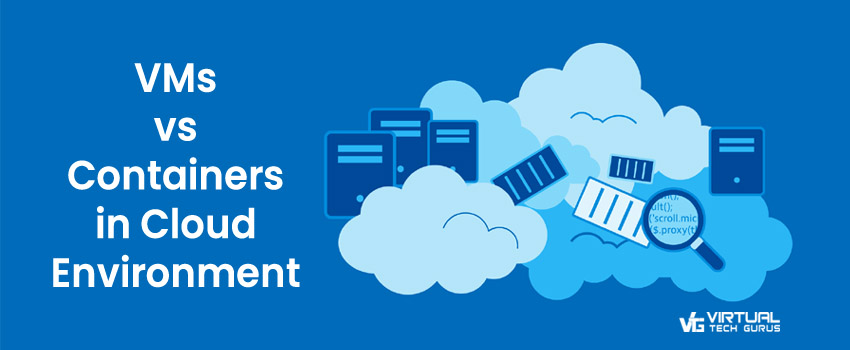
VMs vs Containers in Cloud Environment
We all know that virtualization has enabled the automation and standardization of infrastructure services and allows several Virtual Machines to run on large physical servers, leading to significant consolidation and cost savings.
Whereas containerization enables the automation and standardization of application delivery and management services and allows several application services to run on a single or on a large pool of virtual or physical machine.
We shall now see a comparison of VMs and Containers in cloud environment.
Advantages of Virtual Machines
Virtual Machines are more flexible functionally, by allowing you to run your own OS and workloads, independent of what other VMs on the same server use. With container but, you need to accommodate a common OS and middleware elements when you choose applications, since each container uses the core server platform and shares it with other containers.
Containers, which mandates the need to be standardized on a single hosting platform, may be more difficult to use for organizations with a variety of software platforms for their applications. Since everything runs on a single OS, each guest must use same version of some or all middleware tools.
Virtual machine has the advantage of having hardware isolation. Whereas, containers share kernel resources and application libraries. Since containers share the same kernel, if there’s a vulnerability in the kernel, it could provide a way in to the containers that are sharing it.
When it comes to security in cloud, containers unfortunately are not as secure as VMs. Many containerized applications are available online and may introduce security risks like malwares which launches immediately after installation, potentially harming your entire system.
Advantages of Containers
Containers don’t have the concept of a guest OS for every VM that is created and shares the OS resources. This means that more containers can run in the same host machine compared to VMs running on it. This lower overhead makes it possible to run more components per server with container technology. In addition, the deployment and redeployment of applications or components is faster with containers.
While VMs literally utilize all the server resources in running even simple processes, containers zero in only on the necessary resources.
Traditionally, app version upgrades were accompanied by server down time and thus affected the business continuity. With containers, the rolling upgrades can be done, whereby a newer version of the app is provisioned in separate containers alongside the containers containing the current version of the app. Once the new version of the app has stabilized, the older version is phased out and its container de-provisioned.
Containers may not be as secure as VMs, but it’s possible to make a containerized environment highly secure by taking traditional security precautions to lock down the environment inside a container.
In fact, isolated containers running individual apps also offer targeted error detection and correction, without affecting other parts of the application. This enables the developer to have a snapshot of the problem from a live environment, allowing faster debugging of the issue.
Using containers in addition to VMs
It’s important to understand the scope of these two technologies and that they are each suited to handle certain workloads and use cases and thus decide where it makes sense to put them to use.
So instead of picking just one, you could perhaps adopt both, use a hybrid system which will grant you the best of both worlds: the security of the virtual machine with the execution speed of containers. You could deploy containers within VMs for specific workloads and provide containers as development environments for new applications.
Check out our articles and infographics.
